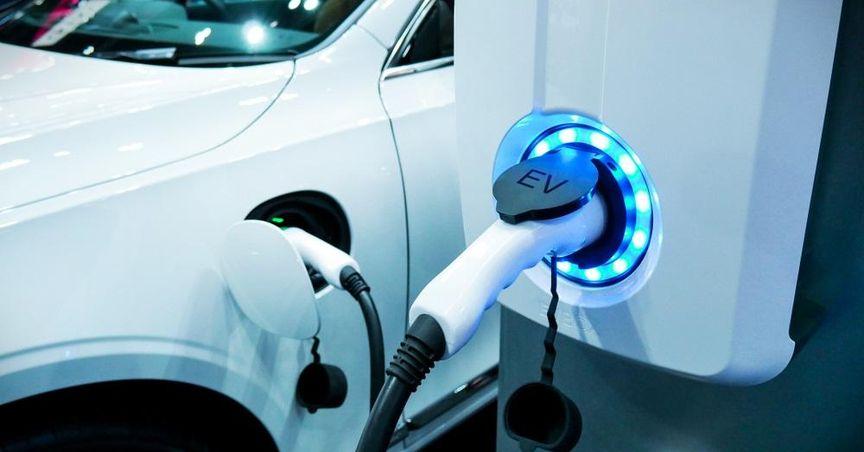Highlights:
- New Tariffs on Chinese EV Imports: The EU introduces extra tariffs on Chinese electric vehicles (EVs) to counter alleged subsidies, with Tesla and SAIC facing surcharges of 7.8% and 35.3%, respectively.
- Impact on European Market Share: China’s share of the EU EV market is now 8%, projected to reach 15% by next year, prompting European manufacturers’ concerns over market stability.
- China Threatens Retaliation: China’s Chamber of Commerce warns of potential retaliatory tariffs on EU exports, including luxury cars and agricultural products.
The European Union has officially imposed additional tariffs on electric vehicles (EVs) imported from China, marking a significant escalation in trade tensions between the two economic powerhouses. Following a year of deliberations, the EU has added tariffs on Chinese-made EVs that it argues benefit from government subsidies on financing, land, raw materials, and battery access. The tariffs will be applied in addition to the existing 10% car import duty, with Tesla facing an additional 7.8% and China’s SAIC-owned MG brand incurring a 35.3% surcharge.
This latest move, announced by the European Commission, aims to address what EU officials describe as unfair competition, with Chinese EVs benefiting from subsidies that enable them to undercut European manufacturers. China has rapidly increased its production of EVs, resulting in a substantial surplus that has found its way into the European market. Chinese EVs currently hold an 8% share of Europe’s EV market, a figure the EU Commission warns could rise to 15% by 2024. European manufacturers argue that the influx of subsidized Chinese EVs threatens the EU’s domestic EV industry, placing further strain on the sector during a critical period of transition toward sustainable energy.
Tariffs on Chinese EVs: A Bid to Protect Europe’s Auto Industry
The decision to impose additional tariffs on Chinese EVs follows months of lobbying by European carmakers who argue that Chinese EVs benefit from subsidies unavailable to European manufacturers. European automakers contend that Chinese companies receive preferential treatment through financing, access to land, and cheaper raw materials, allowing them to produce vehicles at lower costs and sell them competitively in the European market. By imposing these tariffs, the EU aims to level the playing field for its domestic automakers as they invest heavily in electrification.
Tesla, already subject to a 10% import duty, will face a 7.8% increase on EVs manufactured in its Shanghai plant. Meanwhile, SAIC, the parent company of the MG brand, is facing a more substantial 35.3% surcharge. This varied approach reflects the EU’s assessment of subsidy levels among different companies, with Chinese automakers like SAIC benefiting more directly from government support.
The European Commission has stated that these tariffs are necessary to counteract what it views as “market distortion” caused by Chinese subsidies. However, the move has already provoked a strong reaction from China, with its Chamber of Commerce describing the tariffs as “arbitrary” and warning of possible retaliation against European exports. China’s potential countermeasures include tariffs on luxury European cars, brandy, dairy products, and pork, a move that could have widespread implications for EU industries.
Impact on China’s Market Share in the EU EV Sector
The EU’s move comes amid growing concerns over the increasing presence of Chinese EVs in the European market. Chinese manufacturers currently hold an 8% market share in Europe’s EV sector, a figure projected to almost double within a year if the trend continues. This rapid growth has raised alarms among European automakers, who fear that the influx of low-cost Chinese EVs could destabilize the market and erode the competitiveness of local brands.
As European automakers invest billions in transitioning to electric mobility, the rising market share of Chinese brands adds significant pressure. China’s ability to produce EVs at scale and at competitive prices gives it an advantage in penetrating foreign markets. Without protective measures, European manufacturers argue that the EU’s EV industry could face challenges in maintaining its position against subsidized imports.
The EU’s tariffs are a response not only to the immediate issue of market share but also to the broader implications for Europe’s economic stability. With China’s share of the EU’s EV market growing rapidly, the tariffs are intended as a safeguard to ensure that European manufacturers can continue to develop their EV offerings without being undercut by subsidized competition.
Chinese Response and Potential Trade Retaliation
China’s Chamber of Commerce has condemned the EU’s decision, describing the tariffs as discriminatory and warning of possible retaliation. The Chamber has indicated that it may respond by imposing tariffs on key EU exports, including luxury vehicles, brandy, and agricultural products such as dairy and pork. Such measures would likely target industries where Europe holds a competitive advantage, creating pressure on European exporters and potentially escalating the trade conflict.
The prospect of retaliatory tariffs has already raised concerns in Germany, where the luxury car market relies heavily on Chinese demand. Germany, which initially opposed the additional tariffs on Chinese EVs, views the Chinese market as essential for its high-end car manufacturers, including brands like BMW and Mercedes-Benz. The potential for tariffs on European luxury goods could thus have significant implications for Germany’s economy, which is highly dependent on exports.
Germany’s Position and the Wider EU Context
Germany’s opposition to the additional tariffs highlights the complexity of balancing domestic interests within the EU. As Europe’s largest economy and a major exporter of luxury vehicles, Germany has a vested interest in maintaining strong trade relations with China. The potential impact of Chinese tariffs on German carmakers is a significant concern, given the industry’s role in supporting jobs and economic growth.
Despite Germany’s reservations, other EU countries have backed the tariffs as a necessary step to protect Europe’s fledgling EV industry. The EU’s approach reflects a broader strategy to support its green transition and to ensure that local companies are not undermined by subsidized foreign competition. The tariffs underscore the EU’s commitment to creating a sustainable and competitive EV market, even as it navigates the complexities of international trade relations.
The Road Ahead: Balancing Trade Relations and Industry Stability
The EU’s decision to impose additional tariffs on Chinese EV imports represents a pivotal moment for Europe’s automotive industry. As the region seeks to balance its commitment to fair competition with the realities of global trade, the move underscores the importance of protecting emerging industries from potentially harmful subsidies. However, with China threatening retaliatory measures, the situation could escalate, impacting key sectors within the EU.
As the EU’s green transition progresses, the need to ensure a stable domestic EV market will remain a priority. The added tariffs on Chinese EVs reflect the EU’s strategy to support its automotive sector while fostering sustainable development. The potential trade-off, however, could be increased tensions with China, affecting a range of industries beyond automobiles.
Conclusion: A Delicate Trade Balance for the Future
The new tariffs on Chinese EVs mark a decisive step by the EU to protect its automotive industry amid growing competition. By addressing concerns over subsidies, the EU seeks to create a level playing field for European manufacturers as they transition to electric vehicles. However, the prospect of Chinese retaliation adds a layer of complexity, particularly for industries that depend on Chinese markets.
As both regions navigate these changes, the EU will face the challenge of balancing its commitment to fair trade with the economic realities of globalization. The outcome of this trade measure will likely set a precedent for future interactions between the EU and China, with lasting implications for the EV market and beyond.



